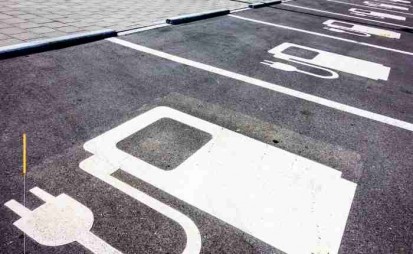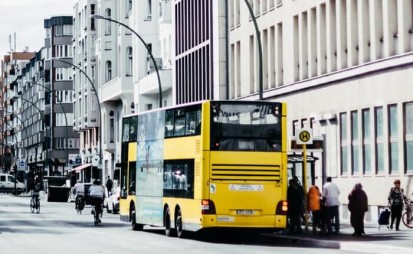We all know that Indian people from the automotive sector are spreading the word at a greater pace. Electric Vehicles! Yes, it's high time that we all must know what good and bad can an Electric vehicle bring to our life. Though Electric Vehicle offers many perks, we must understand the consumers' concerns about Electric vehicles in the Indian market. We must know the reasons behind the sluggish growth of EVs. This article will uncover the pros and cons of Evs in contrast to conventional vehicles and what benefits will you get from being a consumer of an Electronic Vehicle?
Predicament state of EVs
The major reason for the slow rising of EVs in India is because they're over-priced and to be precise, they're quoted about 2 to 2.5 times more than that of a conventional vehicle. This factor is seemingly a formidable hurdle among Indians. Apart from it, Ev's single-charge range and charging infrastructure makes it totally unaffordable for both middle and upper-class people. To offer a higher charge range, one is forced to lodge high-level battery capacity into the vehicle. This in return skyrocket the EV's price. However, Electric Vehicle offers a significant advantage in operating cost which is 25% less compared to that of ICE technology.
Ignoring the evolution
Most of domestic buyers consider 5 factors before buying a vehicle. The upfront purchase price, fuel efficiency, vehicle maintenance, service cost, and other comfort features. Hence, for this case, technology has to be educated to the ignorants and the impressions must spread rapidly. To make this happen, we need a multi-dimensional approach to create awareness among buyers.
Speaking of awareness, Electric Vehicles haven't got into the spotlight yet. It's truly because EVs aren't recognized nor gained the familiarity. The conjoint factors involving lack of Knowledge on Government schemes about economic benefits, supply chains, etc, give rise to the no to slighter growth of Evs in the automotive sector.
Breaking the crisis
Multimodal transportation can definitely revive the state of EVs and mount up production. This grabs the attention of the buyers. Upon knowing that one can eliminate or reduce their fuel cost, they'll become an Ev buyer anytime soon. To be honest, they'll become fuel independent and thus disabling the vehicle emissions.
Domestic users demand a further reduction in battery price. The economy of EVs is unfavorable to domestic users like personal car buyers and two-wheeler buyers. However, this can rapidly fall when the battery prices continue to decline by the market. With government targets, to cut down carbon emissions, fleet adoption of Electric vehicles will be on the rise.
Buyers’ concerns
Electric and traditional fleet management have got few things in common and obviously, differ considerably in a few features. Electric vehicles and gasoline vehicles differ highly and it's almost said they both are incomparable when it comes to mileage.
Considering the long-distance, the cost economy for public transports will be much favorable than that of personal usage buyers of EVs. But though, it might seem favorable, three key factors determine the success rate.
● The charging infrastructure,
● upfront cost, and
● limited charging range.
All these issues shall be fixed by swapping them to battery-driven Electric Vehicles. The standardization of technology will be the only difficult constraint to break. It might sound arduous, but it's not impossible especially when it comes to busses and 3 wheelers. Other concerns include the process of charging - it can be moved to some central location that's tied up with renewable energy suppliers for a lower cost. Additionally, it must allow only the ideal conditions of batteries to be recharged that in turn can increase the life of a battery.
Evaluated facts
Almost 70% of sales are estimated to rise among city buses and 3 wheelers. This inevitable change will definitely bring the Original equipment manufacturers to readily tie up with Indian automotive sectors. Upon analyzing, we guess that the Bajaj auto will be forced to face the biggest negative impact. This is completely understandable for it's the dominant player holding almost 80%+ share on small passenger vehicles and 3 wheelers that are spread all over the urban cities.
On the other hand, swapping them (HEVs) with batteries can bring a great loss among public transports for they are almost equivalent to that of installing a fast charger. Yes, fast charging is a great option for public transports but that entails a huge upfront cost on both buses and with charging infrastructure.
Domestic vs Public users
Standardization of charging infrastructure can help the E-vehicle sector convince buyers specifically the passenger vehicles. The charging infrastructure for domestic users i.e cars and two-wheelers will be designed in a way that one has to wait for a longer period to get it charged and this will not raise an issue among personal usage buyers but for passenger vehicles, the government must enable quick charging stations.
Such stations will have to be installed in the cities for both emergency and backup purposes. This in return enables the smooth running of vehicles without any tightly packed traffics. Many countries have already proposed designs for fast charging infrastructures and suppliers from all over the world are recommending the same. Just how fuel is found customarily available for ICE-driven vehicles, charging stations has to be established in every nook and corner of the city.
Bottom line - We're expecting Hyundai Kona and Maruti Wagon to reach popularity for its segment in the near future. Crude oil is one major key factor, one has to include in the EV's analysis. India imports nearly 100 Billion dollars of crude oil every year that accounts for about, ₹ 700,000 crores. Unfortunately, the total imports of crude oil in 2017–2030 would mount up to $670 Billion if we remain idle and run on ICE-driven vehicles.
Hence ICE is not highly efficient in terms of economy, thus traction motors aka electric motors which are 80% efficient come like a sweet deal. Our government is ready to welcome hybrid motors for they may serve as a typical example of change for the better in the automobile sector. This will eventually be swayed by BEVs (Battery Electric Vehicles) in the upcoming years.


